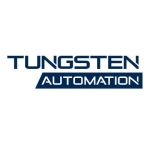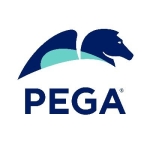What is our primary use case?
In the banking, financial services, and manufacturing domains it is used for process automation and OCR.
For example, it is used by banks for large-scale reconciliation. A group of companies often has multiple bank accounts. We have to do the reconciliation with multiple currencies. On a daily basis, there can be more than 10,000 transactions.
How has it helped my organization?
We have implemented Automation Co-Pilot in our organization. Suppose a business head needs to check the details about a customer, such as order history, payment clearance time, how many invoices have been sent, and how many of them have cleared on time. They may also need information about how many projects they have executed with that customer, how many of their resources have been used, and how long that customer has been associated with their organization. I get all this information in one portal by using Automation Co-pilot.
It is talking with Monday.com, our CRM, as well as with our in-house project management tool, and SAP, where I get all the account details. It gets all the information needed and more, such as how many times we had discussions with the customer about multiple projects, and which salesperson is assigned to that customer. All the details required for business management are presented on one page, using Co-Pilot.
An example of how Automation Co-Pilot has affected our productivity is that in India the taxation system differs from that in the UK. Everything is on a government portal. If I want to deal with new customers and need data about their previous taxation, I obtain all the details from the government portal using Co-Pilot.
We also use Co-Pilot for customer support. We are the number-one partner in India for Tableau and data analytics and we have many projects where we provide Tableau support. We've configured Co-Pilot to gather all the necessary background information from our support system about a customer who raises a ticket. This information is displayed on one screen from our project management systems, repositories, and accounts. All the details are presented in our ticketing software, Jira. Based on this information, we understand the customer's scenario, and what kind of dashboards and RPA processes they have implemented. Initially, a customer support ticket is opened by a chatbot, not a human. The chatbot communicates with the customer and registers the ticket. A bot then opens the ticket and triggers Co-Pilot to gather all the details. With all the details collected, a bot will then assign that ticket to a specific person. This process, which used to require three people, is now done completely by bots.
Another benefit is around approval processes. You can build one using Automation Anywhere Co-Pilot when multiple levels of approvals are involved. Initially, we didn't have an approval process. Multiple people were in approvals. Now, with all the details in a ticket, when it is resolved, it is approved by the manager. That wasn't integrated into Jira, so we automated that in Co-Pilot. A solution should be verified by a senior person. Now, when tickets are approved, it helps us provide a good customer experience and customers will renew their contracts.
And in banking, where you have thousands of loan applications each day, assessing each application involves getting the applicant's credit score and details from multiple portals and government websites. Making a decision for one applicant used to take half an hour. But by using Co-Pilot, the decision-making time is reduced to just five or 10 minutes. It is genuinely helping people speed up operations and decision-making processes.
It has also helped us increase automation. Every day we are sending the "overdue" report to everyone in sales because they do the recoveries. The salespeople update all the details in the database and a reminder is automatically sent to the customer as well as the salesperson if the payment has not cleared within the payment terms. Initially, there were three people generating the reports and sending them to Salesforce, updating SAP, et cetera. Now, there's only one person who is handling the exceptions, because there are exceptions that are not handled by the bot.
Now, our salespeople are focusing more on business opportunities and not worrying about payments. Most of the time, payments are taken care of by the bot.
After we implemented that process, we then implemented vendor invoice processing, customer invoice processing, customer payments, PO processing, and bank reconciliation. We have implemented multiple processes.
What is most valuable?
The most valuable feature, which was launched last year, is Automation Co-Pilot. Microsoft has a co-pilot, but it's only for Word, Excel, Outlook, and PowerPoint. But Automation Anywhere offers a co-pilot that is suitable for Salesforce, Genesys, Atlassian, and other contact center and standard applications. This is a game-changing feature for Automation Anywhere compared to the market. We are also getting good responses from customers about this product.
Automation Anywhere is easy to use. In my experience with more than 100 customers, coding is not a big deal nor is writing the bot. Understanding the process and providing optimized workflow, and fitting RPA properly for their processes are important.
In terms of the learning curve, Automation Anywhere provides detailed resources through their portal, including instructor-led training, prerecorded sessions, and exams. When training my team, I initially recommend that they go to the Automation Anywhere University. Then, for two days, I provide high-level training, covering the use cases and overall process. We then give simple use cases to the team and they are ready to implement them. Within three months, I have trained a team of over 20.
I hire people who have worked with other technologies but who want to shift to RPA. They already have knowledge of processes and their logic is strong. Others don't know about logic or how to apply algorithms.
I'm impressed with the solution's OCR and document automation because I've worked with multiple OCRs and Automation Anywhere has built in most of the document formats so you can easily get results. You can easily and quickly extract data from a PDF and it's faster than other tools.
What needs improvement?
I would like to see a low-code/no-code platform, similar to Zoho Creator or Joget, for process building, so that we can build applications within Automation Anywhere itself. Right now, we need some kind of portal that supports these types of activities. We would like to give a 360-degree solution to our customers without needing to get help from other technologies, like Joget to build processes, or Java to build custom portals.
If Automation Anywhere included these features, I would be able to include all these processes. There are features in place in Automation Anywhere right now, in AARI and Co-Pilot, but they have limitations. They do not match the development capabilities of platforms like Joget or other applications like that.
I'd like to see the stabilization of Co-Pilot and integration with multiple products. Right now, it is integrated with Genesys and Salesforce, among others. In the future, I will require integration with SAP Oracle, Atlassian, and Service Now. The contact center vertical is important and ticketing comes into the picture. We can build integration with Atlassian, but I have to do the coding and use extensions on everyone's laptops. Integration of Co-Pilot with Atlassian and other products will help the user.
For instance, if a big bank wants to automate loan application management with Co-Pilot and I need to use their CRM, if the CRM is not supported they won't do the project. And if a bank has over 3,000 loan agents, I have to install the extensions and integrations on each of their laptops. Instead, I could add one line of code inside Atlassian and get all the results automatically on everyone's laptops. This would save a lot of time for both developers and customers.
For how long have I used the solution?
I have been using Automation Anywhere for more than four years.
How are customer service and support?
Technical support is related to the product only. We receive good support from them because they respond within one hour. They even have chat support.
Customer environments aren't the same. Sometimes they block the reverse proxy or other things. That's when I need help from Automation Anywhere because they are the product experts, while we are implementation experts. If we have an issue with the product, we get help from Automation Anywhere.
For example, if there is a problem with communication between the server and client and the bot is down, I need to contact Automation Anywhere to resolve the issue. We reach out to Automation Anywhere for these kinds of problems, but we handle process-related or implementation-related issues ourselves.
How would you rate customer service and support?
Which solution did I use previously and why did I switch?
I worked with UiPath for about two to three months.
What's my experience with pricing, setup cost, and licensing?
Co-Pilot is not free. It has a user-based cost. If I have 100 users, I need to purchase 100 licenses. But for practice purposes, you can get the Community Edition where you can understand all the details for implementing Co-Pilot.
The pricing is reasonable.
Which other solutions did I evaluate?
Automation Anywhere is the only RPA tool that is developed using something other than .NET technology. If you go for UiPath, Blue Prism, AutomationEdge, or Pega, they are all built on .NET, and only support Windows. But Automation Anywhere is developed on Java and Python entirely, and is totally web-based. Other tools are desktop-based. That means I can install their server on Linux too. Most banks and many other enterprise organizations require servers on Linux, not Windows. That's an advantage for Automation Anywhere.
We are working with one of the top-three banks in India. They have a policy that all servers have to be Linux servers. Because of that, UiPath and other tools were eliminated in the first stage of the deal.
We did build our own product related to OCR but not RPA, but Automation Anywhere is the biggest product. We also looked at Power Automate, but cost was a factor. Power Automate charges per process, not per bot. For example, it doesn't take more than 10 minutes to close the last month's General Ledger. One of our customers was paying $600 per month for this process with Power Automate. He went with Automation Anywhere, where he only had to pay $3,000 to $4,000 in total for an unattended bot, which was able to help 24/7.
And to get all the components in UiPath that are similar to what you have in Automation Anywhere, a customer would pay more than $37,000, while an Automation Anywhere customer would only pay $25,000. That is a game-changer.
As for using an API integration instead of RPA, API is faster than desktop automation, but it depends on the scenario. If you want to work with standard applications like SAP or Oracle, you can use APIs or desktop automation. I faced an issue with one of my customers who said that to do an API ABAP integration for SAP automation, he would have to pay for automation and ABAP development. I suggested he not pay for ABAP and just do desktop automation. What will be cost-effective depends on the scenario and the automation.
If a customer has to spend $10,000 on ABAP and another $30,000 to $40,000 for Automation Anywhere, they will kick us out. But if we go with Automation Anywhere and there is no need for ABAP, and instead we'll do desktop automation, the customer will be much happier because they are saving costs.
What other advice do I have?
I have replaced existing portals for multiple customers. For one of my customers in Dubai, when we came into the picture, multiple things were not in their portal. They had developed the portal in-house. We started by understanding all the requirements. Before we started with RPA, we redeveloped the portal and then applied RPA OCR and pushed the data where it needed to go.
People develop their portals according to their convenience, but they don't know the standard processes and how to implement them. When they have to provide reports to management, or they have to do an audit, or they have to check details of particular transactions, they don't get the details from their existing portal or process. We standardize their process and then we implement RPA. If their process is not standardized, RPA will be a failure for the customer.
A simple process, from requirement gathering to production, takes about one month. Solutions don't require more than two or three people. For smaller projects, we don't assign a dedicated project manager. Instead, we use a shared project manager. The business analyst is also shared, because the costs of these roles need to be recovered. If the cost isn't recovered, there's no need for us to assign this role. The business analyst will do the final testing of the project because they're involved from the initial phase of the project.
The time spent maintaining bots depends on the bots, the situation, and the customer. A critical process might have 40-plus unattended bots and might take two resources during business hours for project support and monitoring. But I recommend support on an hourly basis.
An enterprise with multiple licenses should have at least one dedicated support person. That resource will provide reports to management. For instance, when discussing future projects, management will require all the information to approve the budget. We can present all the information: the number of transactions over the last month, and how much time or money was saved. Support will also provide training to business users if required. When AARI is part of the picture, we have to train people.
Disclosure: My company has a business relationship with this vendor other than being a customer. Partner





















